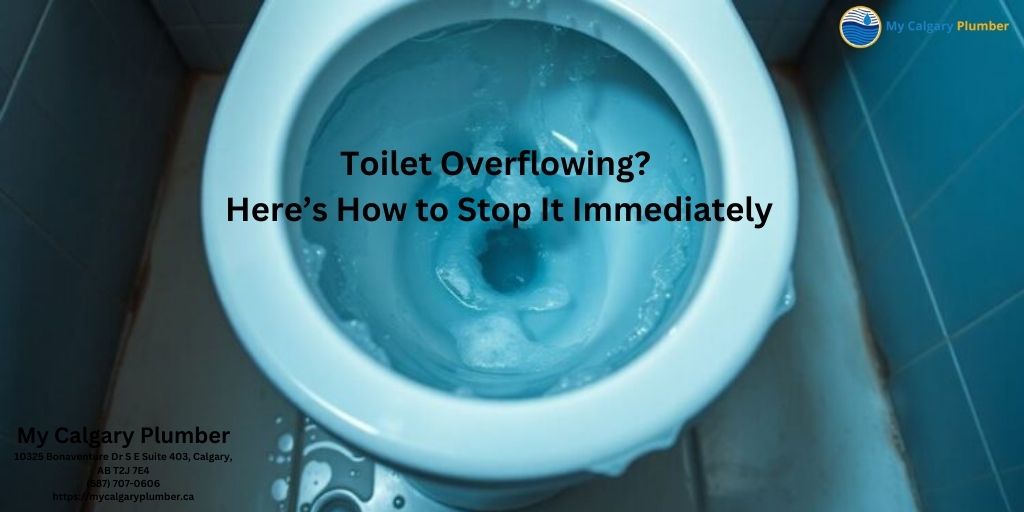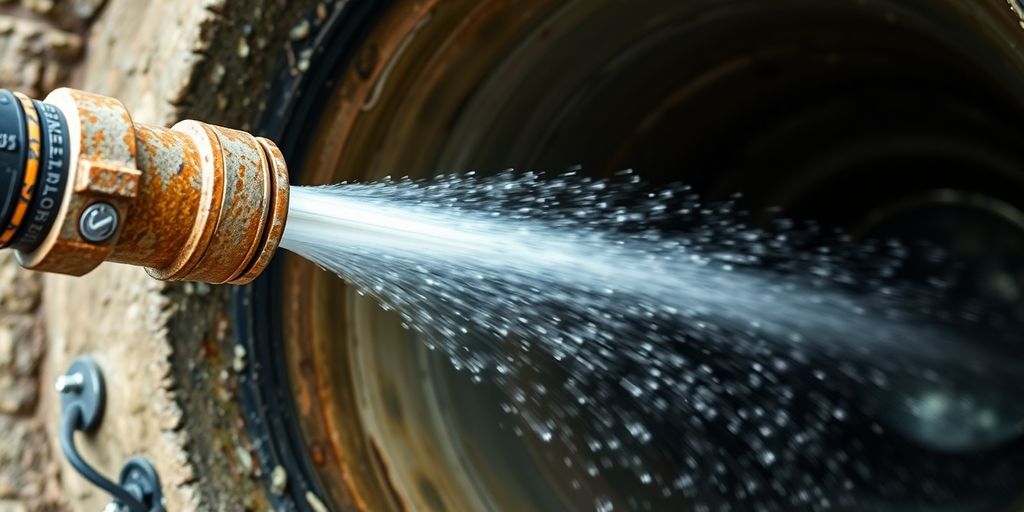A slow-draining bathroom sink can quickly turn your morning routine into a stressful race against time. Imagine this: you’re already running late, only to find your sink filled with murky water after brushing your teeth. Now, instead of focusing on getting ready for work, you’re left wrestling with an inconvenient problem.
Understanding what’s causing the issue is half the battle won. Common culprits like hair and soap scum might be gunking up your pipes, but did you know that even small objects like toothpaste caps can sneak down the drain? We’ve put in substantial effort to gather practical DIY solutions that you can apply right away. These tips aren’t just about quick fixes—they’re also about preventing future clogs, ensuring you start your day smoothly without unexpected hiccups.
A slow-draining bathroom sink can be caused by various issues, such as hair, soap scum, or mineral buildup in the drain. To address this problem, try using a plunger to clear any blockages or pouring a mixture of baking soda and vinegar down the drain followed by hot water. If the issue persists, it’s recommended to consult a professional plumber to further diagnose and resolve the underlying cause.
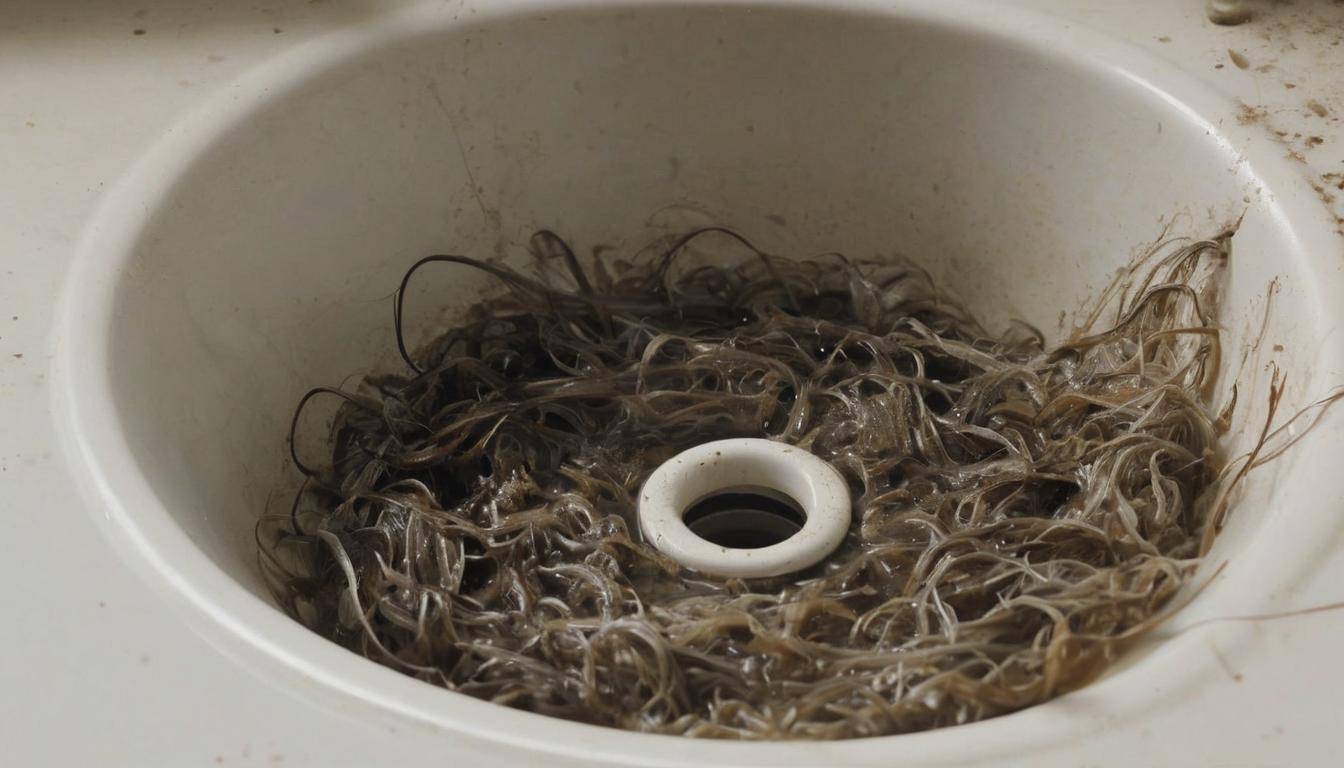
Common Causes of Slow Draining Bathroom Sinks
When you notice that your sink seems to be taking its sweet time draining, it’s quite natural to wonder what could be causing this nuisance. Several factors might lead to a pesky slowdown in the draining process, making it important to understand these culprits to tackle the issue effectively and restore smoother water flow in no time.
One of the most notorious culprits responsible for clogging the sink drain is hair. If left unattended, strands of hair tend to accumulate and often form a mesh-like barrier, snagging other particles along with it. Furthermore, they can intertwine around other surfaces and grow into a tightly-packed obstruction within the pipe network. The combination of hair and soap scum creates an even stickier situation, where soap and toothpaste residues contribute by adhering to pipe interiors and further impeding water flow.
In addition, the purity of your water supply can also play a role in causing blockages. Hard water, laden with excessive minerals like calcium and magnesium, can slowly deposit these minerals within the pipes over time – resulting in mineral buildup. This accumulation typically narrows the pipes, directly impacting drainage capability. Beyond that, very small objects can inadvertently fall into the drain—such as toothpaste caps or jewelry—almost imperceptibly hindering water flow.
Consider this: Even if you’re diligent with keeping every nook and cranny of your home neat and tidy, when it comes to plumbing, elements like corrosion can turn volatile here. In older plumbing systems, metal pipes tend to corrode over time leading to rough surfaces exposing easy entrapment points for debris.
Understanding these potential blockage sources helps us recognize when our sinks aren’t quite feeling up to par and require examining. Knowing these probable causes will assist us in choosing an effective approach to maintain our bathroom sinks at their optimal functionality.
Each cause necessitates a strategic approach tailored towards clearing the hair and debris lodged in your bathroom sink drains. It’s vital to dive into practical solutions designed to address each concern methodically.
Clearing Hair and Debris
It’s no secret that hair and debris are primary culprits behind slow-draining bathroom sinks. These little devils love to glob onto each other and hold each other hostage, refusing to budge. It’s enough to cause any homeowner a headache, but fret not, for there are clever ways to fight back against this stubborn clog. Let me enlighten you with a few do-it-yourself techniques.
Step I – Use a Drain Snake
Believe it or not, drain snakes (also known as augers) work like magic wands when it comes to tackling hair clogs. Insert this flexible tool down the drain and twist it around to catch onto the mass of hair. Once it has a good grip on the clog, carefully pull the snake out, bringing the captive hair along with it.
Drain snakes come in different lengths and thicknesses – some even have barbs specifically designed to snag hair from drains without much effort. It’s a handy tool that’s worth having in your DIY plumbing arsenal.
Step II – Plunger Method
Yes, your friendly neighborhood plunger is an excellent choice for clearing sink blockages too! Make sure to use one specifically designed for sinks, as they’re different from standard toilet plungers. Here’s what you need to do:
- Fill your sink with enough water to cover the suction cup of the plunger.
- Position the plunger snugly over the drain and repeatedly plunge up and down vigorously. The motion creates suction, dislodging the clog and allowing it to move more smoothly down the pipe.
Persistence matters; several rounds of plunger action might be necessary before you achieve success.
Step III – Coat Hanger Hook
Every home typically has at least one wire coat hanger lying around, waiting to be repurposed as a DIY drain-clearing tool. Straighten out the hanger and create a small hook at one end. Insert this makeshift tool into the drain, angling it carefully to latch onto hair and other debris lurking in its depths. Slowly pull upward once you’ve captured the pesky clog.
While this method may require a bit of precision, don’t underestimate its effectiveness – sometimes simplicity is key.
Step IV – Wet/Dry Vacuum
If you own a wet/dry vacuum with a liquid mode setting, congratulations – you have a great tool for removing stubborn clogs! Place the hose end directly over the drain opening, ensuring a firm seal between them. Switch your vacuum on and let it work its suction magic on the blockage. Before you know it, your sink will be flowing freely once again.
These simple yet effective methods provide homeowners with practical solutions for dealing with slow-draining bathroom sinks caused by hair and other debris accumulation. With these tricks up your sleeve, pesky clogs won’t stand a chance!
Mastering these techniques equips you with indispensable skills when faced with various plumbing predicaments. Let’s now equip ourselves with further knowledge about removing sediment and mineral buildup in pipes.
Removing Sediment and Mineral Buildup
Over time, the minerals from the water, such as calcium and magnesium, can leave deposits in your pipe that resemble limescale or chalky residue. This crusty buildup, known as limescale or scale, can congest your pipes just like hair and debris do.
When tackling limescale, sometimes the best solutions are right in your kitchen! Pour about a cup of baking soda down the drain followed by a cup of white vinegar to initiate a fizzy reaction that aids in breaking down mineral deposits. Let that mixture fizz away for approximately 10-15 minutes before rinsing it all out with hot water. This method is both natural and highly effective for eliminating those stubborn mineral deposits.
A Natural Remedy
This natural remedy works due to the chemical interaction between baking soda (a base) and vinegar (an acid). The fizzy bubbles help to loosen and break down the build-up, making it easier to flush away.
Another traditional cleaning trick involves using lemon juice and salt. When combined, lemon juice acts as an acid to dissolve minerals, while salt functions as an abrasive to help scrub away any residual particles from the pipes.
Home remedies may not suit everyone’s preferences, so it’s comforting to know that there are commercial descalers available as well. These descalers are specifically formulated to remove hard water deposits from pipes and are paired with simple-to-follow instructions for safe and effective use.
By implementing these methods—whether using natural DIY techniques or commercial descalers—you can efficiently address sediment and mineral buildup within your bathroom sink drains, ensuring improved water flow and preventing potential clogs.
Keeping sediment and mineral buildup in check will not only restore proper water drainage but also maintain the health of your plumbing system in the long run. Therefore, addressing this issue promptly is crucial to maintaining a fully functional and efficient bathroom sink.
In our quest for effective solutions to common plumbing issues, we’ll now explore various reliable methods for unclogging drains that can come to your rescue when you’re faced with a stubbornly blocked sink or shower.
Effective Methods for Unclogging Drains
When faced with a slow-draining sink or a completely clogged drain, you need a few tools and methods to help get the water flowing freely again. From everyday ingredients likely already in your kitchen to products available at hardware stores, here’s how you can effectively tackle those stubborn clogs.
Step I – Boiling Water
The most basic yet surprisingly effective method is boiling water. It’s an excellent starting point: slowly pour boiling water down the drain over several stages. This can help to soften and dissolve substances like soap scum and grease that have built up along the pipes. Be cautious with plastic piping as boiling water can soften it and lead to damage.
This is a simple and environmentally friendly method that often gets overlooked. It’s particularly great for flushing potential clogs out before they build up too much.
Step II – Chemical Drain Cleaners
Chemical drain cleaners are another option to consider. When used sparingly and correctly following the safety instructions on the packaging, these cleaners can be very effective at dissolving tough clogs. Found in most hardware stores, these products contain strong chemicals capable of breaking down obstructions within your piping system.
However, it’s essential to bear in mind that chemical drain cleaners may cause damage to certain types of plumbing and may also pose risks to human health if mishandled. Therefore, caution should be exercised when using them.
Step III – Enzyme Cleaners
For those interested in eco-friendly options, enzyme-based cleaners could be the ideal choice. These cleaners use natural enzymes to break down organic materials in clogs over several hours.
Enzyme cleaners are not as harsh as chemical alternatives and can sometimes be more effective for certain types of blockages including organic matter or grease buildup. They tend to be more environmentally friendly and gentler on your pipes, which is an important consideration when looking after your plumbing system.
These methods each have their own advantages and considerations, so choosing the right approach depends on the specific type of clog you’re dealing with. Regular maintenance plays a significant role in keeping your drains clear by preventing issues from occurring in the first place.
With a robust arsenal of unclogging methods at your fingertips, it’s time to take a closer look at some other alternative solutions for improving drainage.
Other Solutions for Improved Drainage
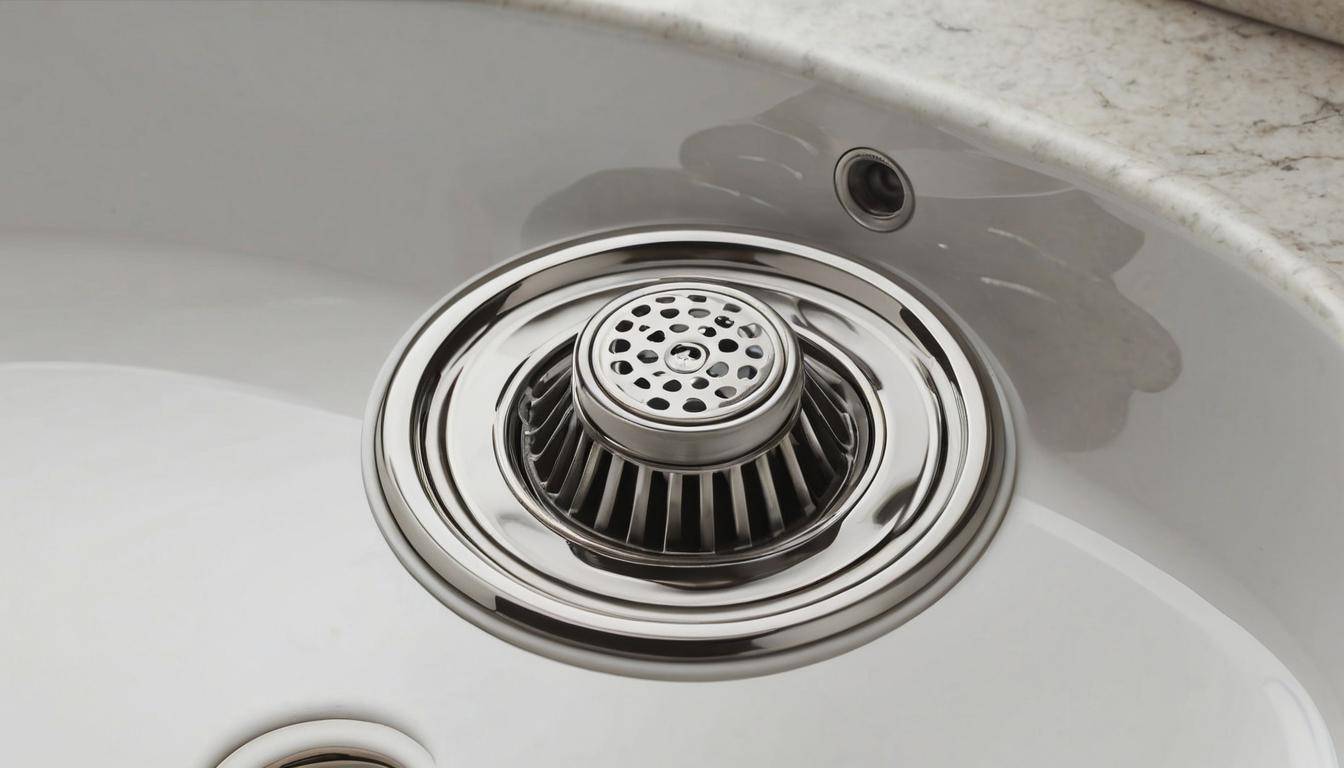
Beyond employing unclogging methods, adopting preventive measures can significantly enhance drainage in your bathroom sink. Simple yet effective tactics can help maintain a smoothly flowing drain and prevent recurrent clogs.
Step I – Regular Cleaning
To prevent buildup that could lead to slow drainage, routinely keeping your sink and drain clean with non-abrasive cleaners is vital. Doing so will inhibit the accumulation of grime and soap scum on the walls of the pipes, which could impede water flow.
Step II – Mesh Drain Covers
Using mesh strainers over your drain is an excellent addition to catching hair, soap residue, and large particles before they enter and block the pipes. These strainers can be easily cleaned out after each use to further prevent clogs from forming.
Step III – Pipe Maintenance
Inspecting and cleaning the P-trap under the sink periodically is an essential step in maintaining efficient drainage. The P-trap, designed to catch debris and other waste passing through the drains, can be easily unscrewed for thorough cleaning. Removing accumulated debris from this component prevents potential clogs that often lead to slow drainage.
Step IV – Flush with Hot Water
Another valuable practice for preventing blockages is monthly flushing of the drain with hot (not boiling) water. This simple measure helps clear the pipes of minor buildups, such as soap residue or grease, which may be reducing drainage efficiency.
When taking these steps regularly, you’re actively interrupting the formation of blockages at various stages—before they form, as they’re gathering, and as they’re beginning to obstruct water flow.
By incorporating these practices into your routine, you can effectively maintain better drainage in your bathroom sink and lessen the likelihood of frequent clogs while promoting overall hygiene and health of your plumbing system.
These proactive steps pave the way for ensuring smoother water flow and assisting in averting recurrent blockages before they escalate into major plumbing issues. Now let’s explore when it’s time to bring in a professional plumber to address more complex challenges.
When to Call a Professional Plumber
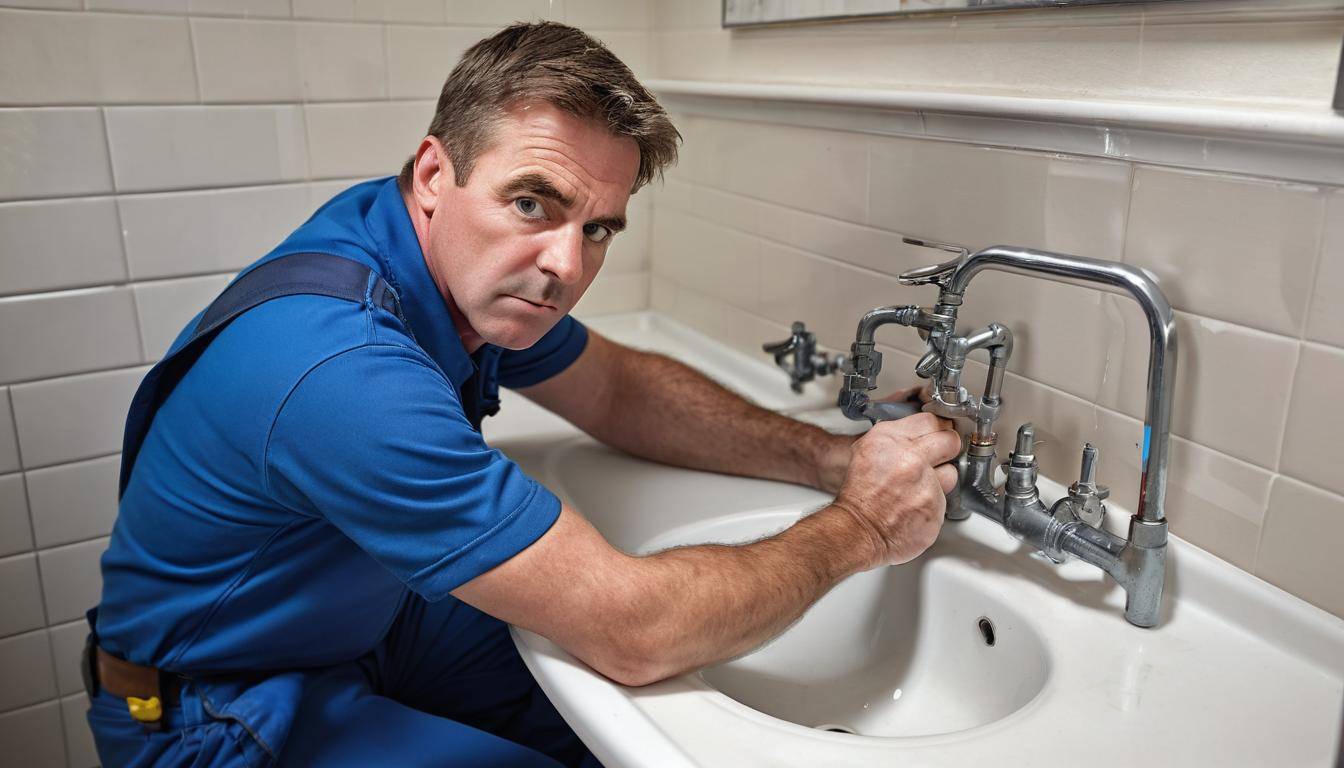
When your DIY attempts have fallen short and your sink still hasn’t shown any improvement with its drainage, it could be a sign of an underlying issue that needs expert attention. This is where a professional plumber can truly make a difference. It’s essential to recognize that persistent drainage problems may indicate more serious concerns, such as damaged pipes or significant blockages further along the plumbing system. If left unattended, these issues could lead to larger and potentially more costly problems down the line.
So when you find yourself facing ongoing sluggish drainage despite your best efforts, it’s important to reach out to professional plumbers who can tackle complex issues effectively, keeping your home safe and functional.
Advantages of Professional Help:
- Specialized Equipment: Professional plumbers have access to tools and equipment like hydro-jetting and advanced camera inspections allowing them to efficiently identify and resolve complex drainage concerns.
- Accurate Diagnosis: Professionals can diagnose the root cause of slow drainage, ensuring that the problem is effectively resolved.
- Preventive Measures: A professional plumber can also provide preventative maintenance tips, helping you avoid similar drainage issues in the future.
Calling on the expertise of a local plumber like My Calgary Plumber guarantees that the problem will be accurately diagnosed and professionally addressed. Their skilled technicians are well-equipped to handle complex drainage issues effectively.
Remember, trusts professionals with years of experience enhances your chances of having a complete solution and avoiding recurring troubles. Keep in mind that waiting too long to address a persistent slow drain issue could result in extensive damage or pose health risks if it’s related to mold or bacterial growth. In such cases, seeking the expertise of a qualified professional should be regarded as an investment in protecting your property and your well-being.
With their prompt and reliable services, My Calgary Plumber ensures that any plumbing issues are promptly handled by their knowledgeable team of experts who are dedicated to providing top-notch service while prioritizing customer satisfaction with reasonable costs. Their commitment to same-day service illustrates their dedication to resolving urgent issues efficiently.
Ensuring proper function and maintenance of your plumbing systems is crucial for the safety and well-being of your household. Therefore, investing in professional help from established firms like My Calgary Plumber remains pivotal in resolving tricky plumbing issues. To consult with the Calgary Plumbing experts, kindly visit My Calgary Plumber Contact page or call 587 707 0606.



